Venezuela
We just crossed the border from Venezuela into Brazil and we would like to give you a quick update from our first 2 weeks of traveling. Uploading the pictures has been quite painful. It´s hard to find a relatively fast internet connection, but finally I am done with the upload. Next time I probably just have to reduce the number of pics, but there are just so many interesting ones.
Our first stop in Venezuela was Carupano on the Carribean coast.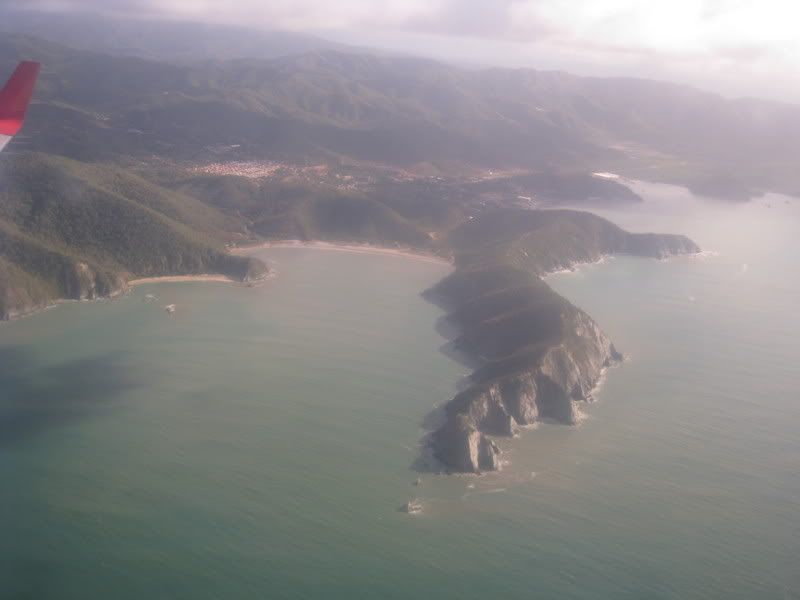
There we enjoyed Carnival and wanted to spend a few relaxing days at the beach. Carnival was a fun event with lots of people, but not quite as colorful as expected. Sorry… but we do not have any pictures. I was not feeling like having my camera with me in the crowd. It´s best to go with as minimal stuff as possible.
The beaches close to our Posada (Posada Nena) were somewhat disappointing and not very clean. In addition we both got already sick on the third day and spent a full day in our rooms in the vicinity of the bathroom.
Courtyard at the Posada Nena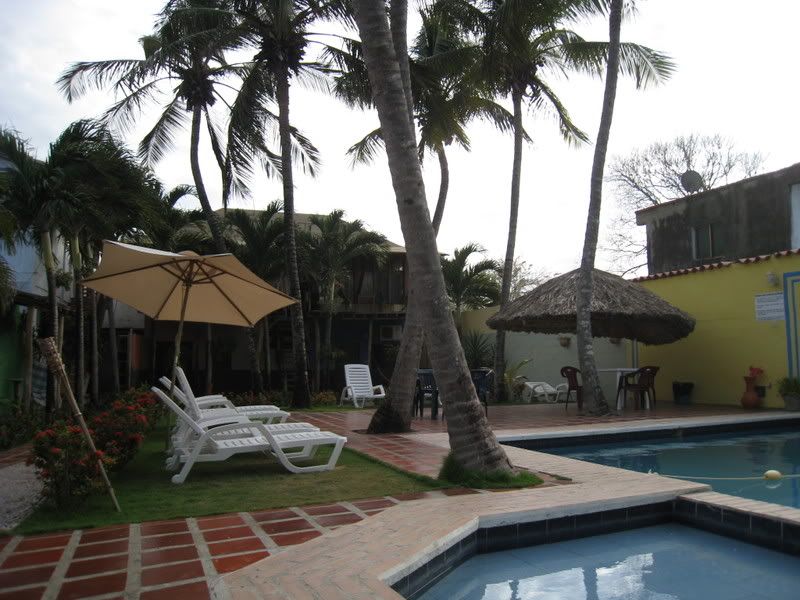
Having seen the cleanliness in the area and after our health setback we did not even feel like checking out the famous Playa Medina we heard nice things about. We were ready to move on. We figured most people do not really come for the nice beaches to Venezuela and rather for the Orinoco Delta, Jungle and Gran Sabana adventures. Therefore we made our way down to Puerto Ordaz with the bus.
The local car shop (cleanliness or environmental concerns take a backseat)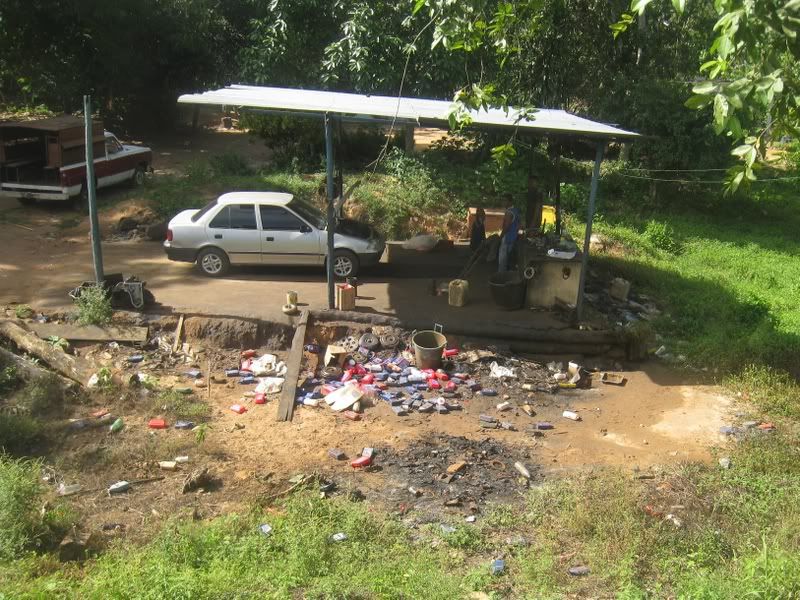
A more pleasant view on the way
Typical Scene on the roads to Puerto Ordaz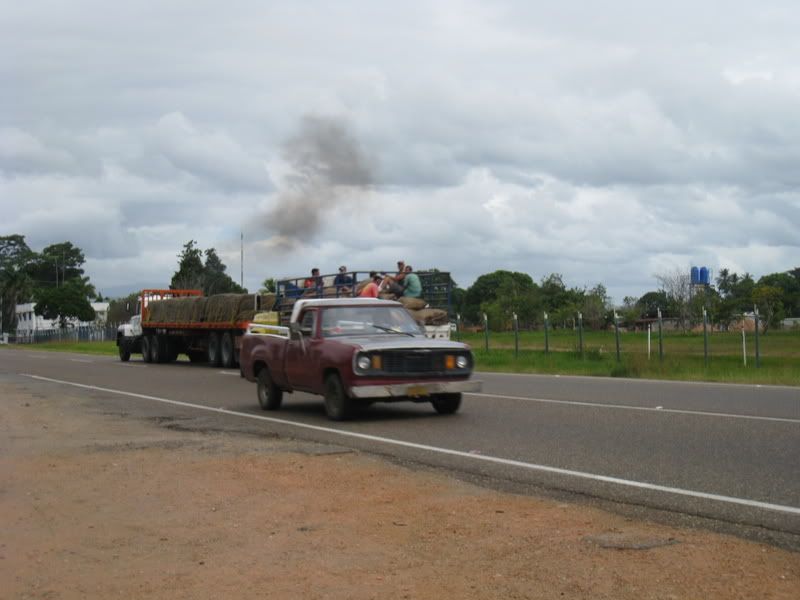
Monkey at the Chachamay Park in Puerto Ordaz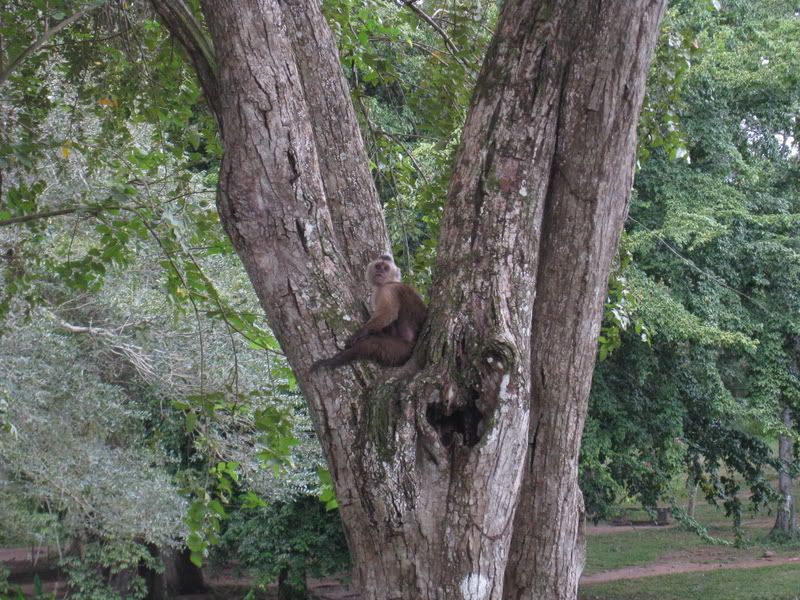
Waterfalls in the Chachamay Park in Puerto Ordaz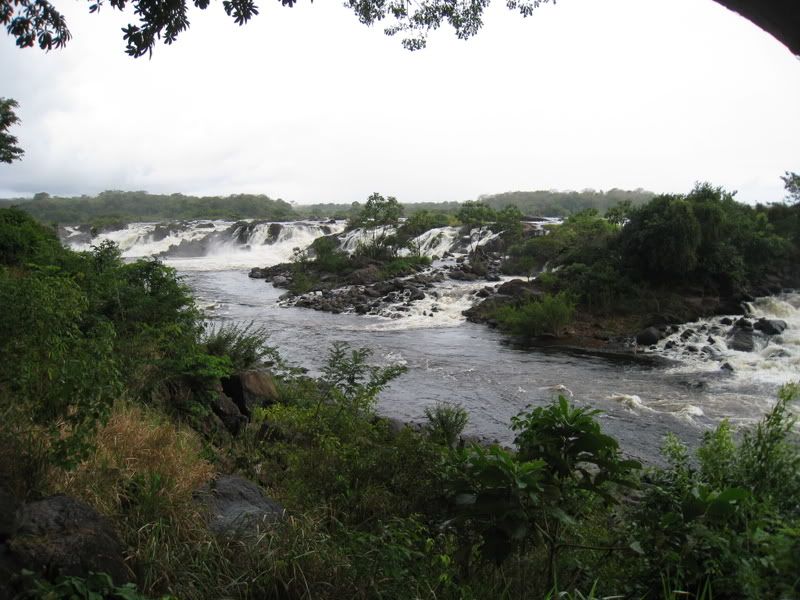
We booked a great Orinoco Delta Tour with Lobo.
However a huge problem you face when you travel in Venezuela is how to pay for things. There is an official exchange rate for US dollar and Euro, but this rate is less than half of what you get on the black market when you pay in cash. Best is to bring everything in cash (US$ or Euro) and preferably large bills.
We could somewhat avoid running out of cash with paying the tours with online payments to German tour operators in Euro.
As mentioned, the Orinoco Delta tour was great and took as down a small side river (Morichal Largo) and later on to the Manomo (large side arm of the Orinoco) all the way to Pedernales and back in 3 days.
Our ¨private boat¨ and indigenous guide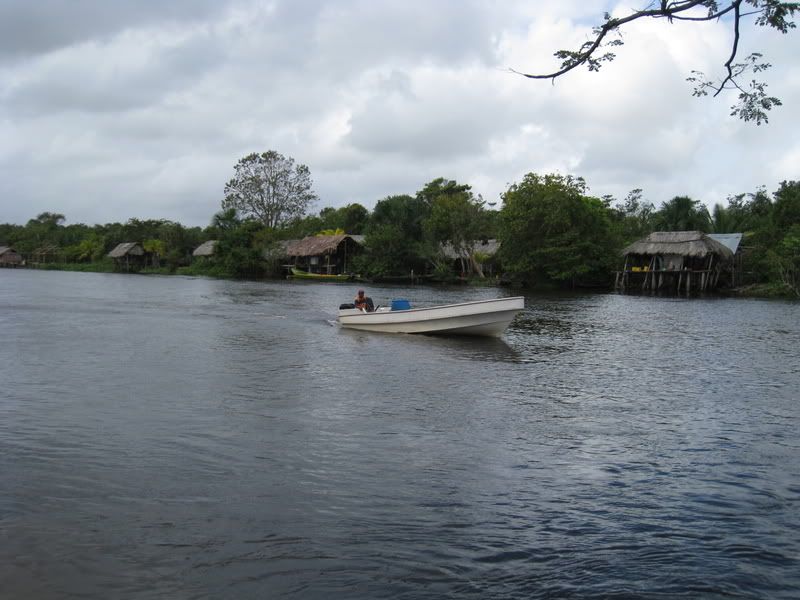
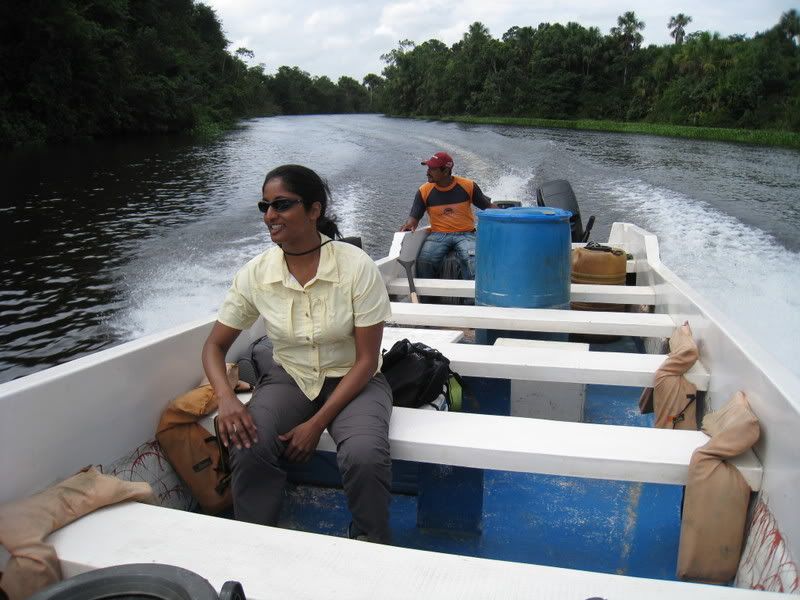
The Cacao d`Agua Flower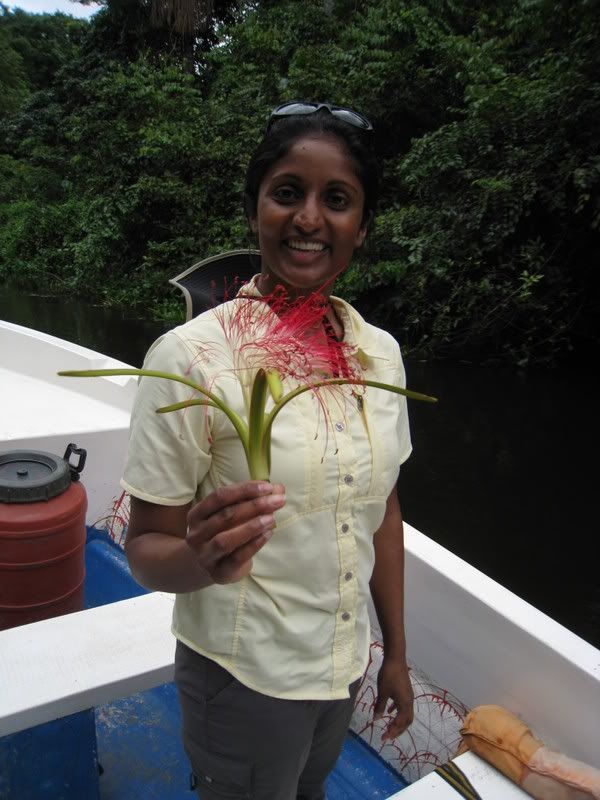
On the Morichal Largo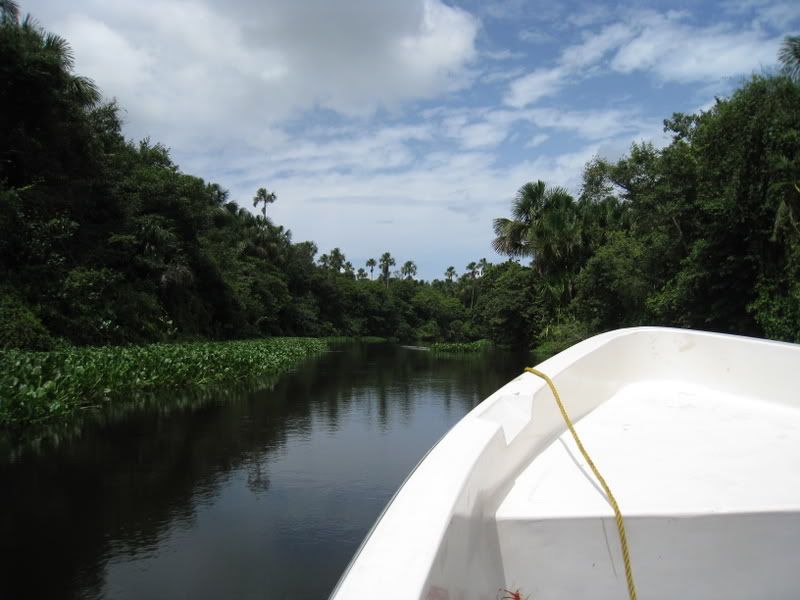
The best part was the fishing. Fishing down here in the Orinoco Delta is quite different than in Colorado. Take a piece of meat or fish, place it on a hook and the fish will come in masses. Our guide pulled a fish out about every 3 minutes and even we managed to hook one every 5 to 10 minutes. After about half an hour of fishing we had already more than a dozen fishes. Wow!!!
Jaya got a nice Guavina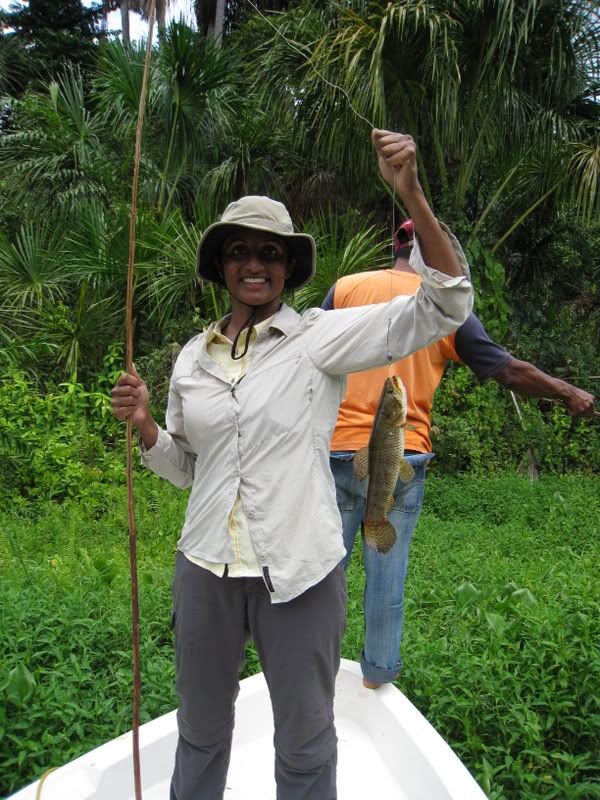
Yummy… this one is going to make a good dinner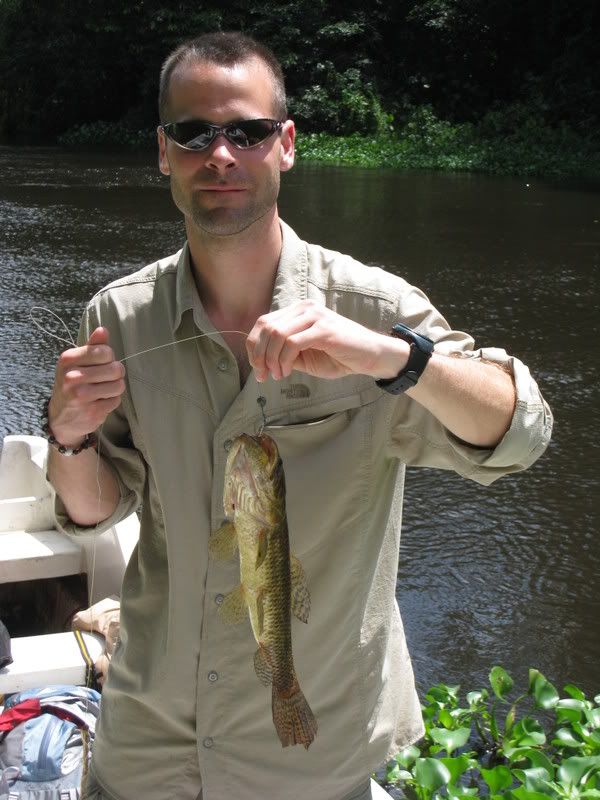
Our guide Pachito got a Piranha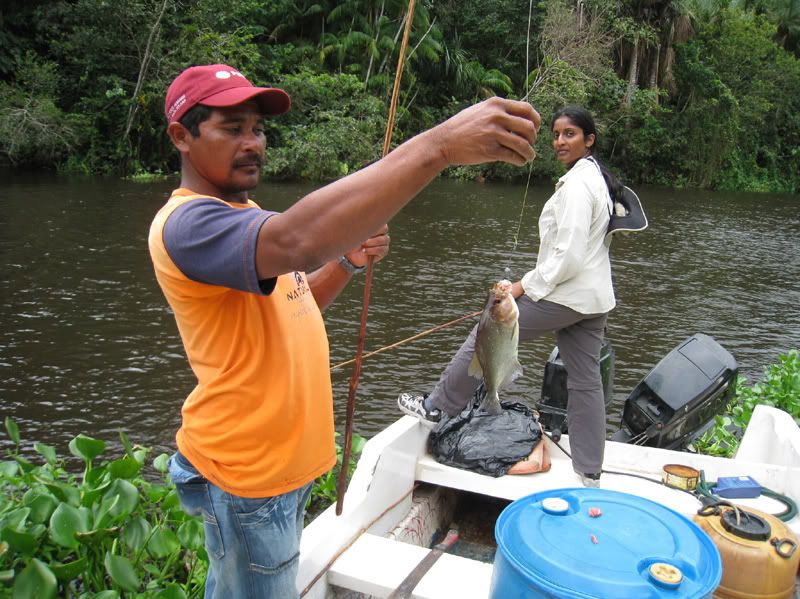
Look at those teeth… you better keep your fingers away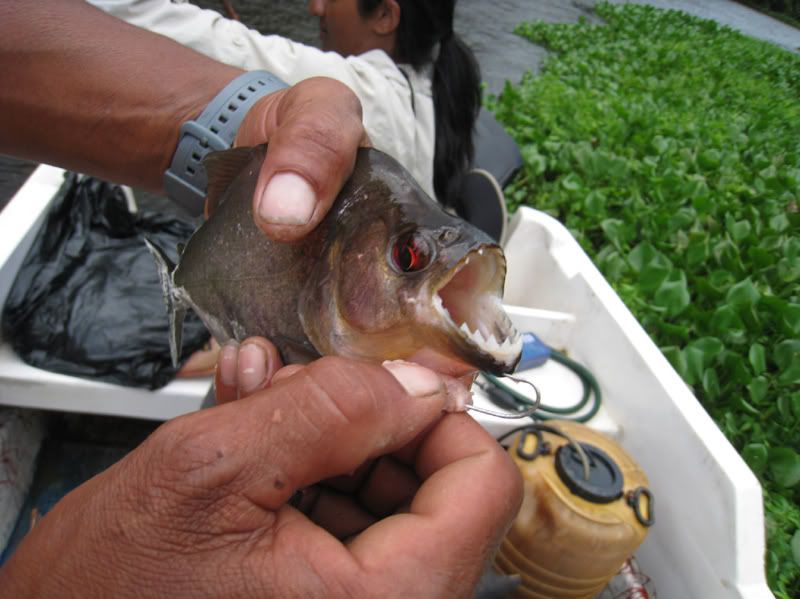
Jaya with a Piranha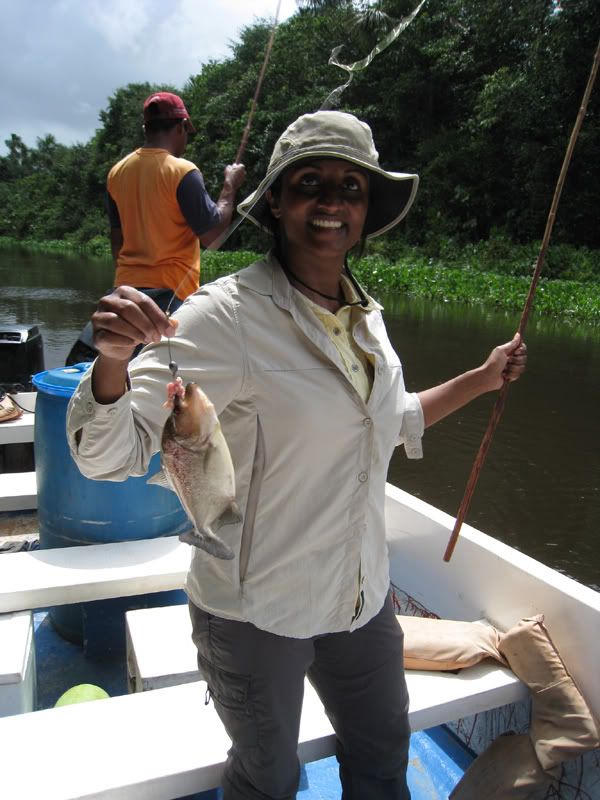
Our bucket after half an hour of fishing …. Not too bad!
Indigenous Village along the way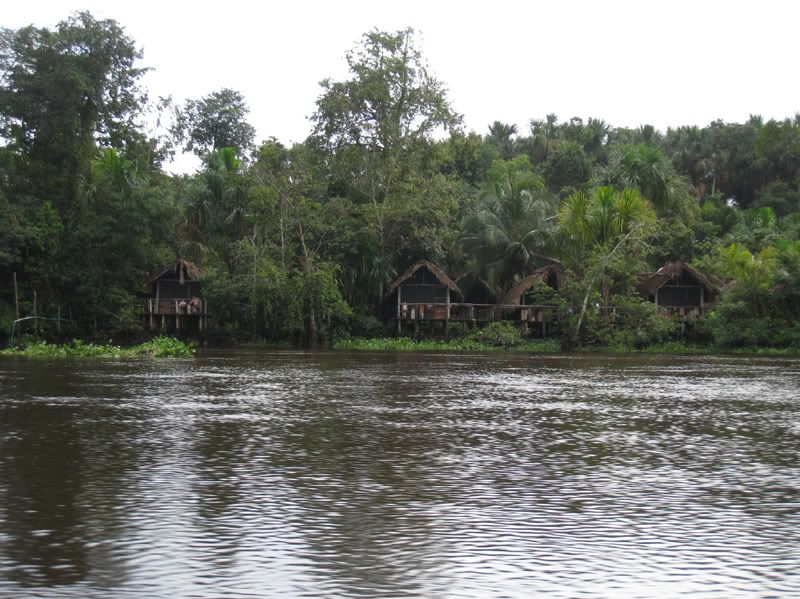
A Toucan we saw high up on the trees (besides monkeys and all sorts of other birds)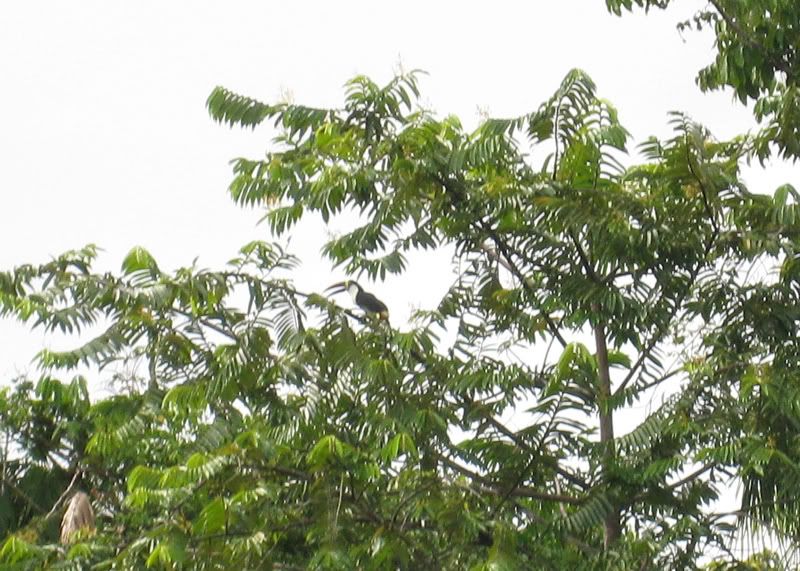
The first night of our 3-day trip we spent with a hammock in an indigenous village.
This was quite the experience! You see first hand the simple way of life.
Somewhat mind blowing to us however is to see how the indigenous treat their source of life, the river. Rather than protecting and nourishing the river, it is rather used like a tool; a big trash remover. Everything just gets thrown in the river with no regards to environmental issues. I guess this will sooner or later cause health issues, but this does not stand in the foreground just yet. Their daily life is still a fight for survival and such thoughts do not come up or are simply not understood.
Indigenous kids offering some nice jewelry for sale
They make some boats right there in the village with only simple tools like chain saw and machete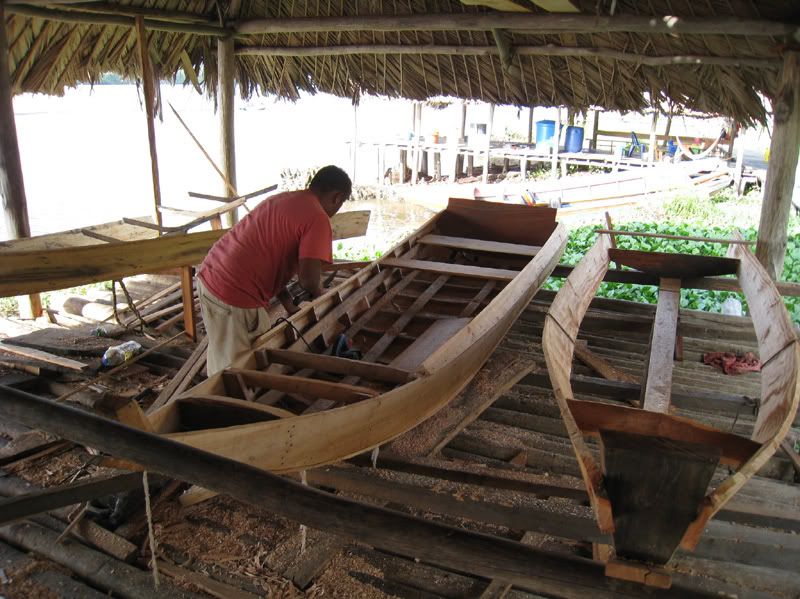
The village we stayed in.
You will notice some power poles. They actually have a generator which provides the village with electricity and was provided by the Venezuelan Government.
A family watching TV. Quite amazing when you see that they have TVs but not much else to live with.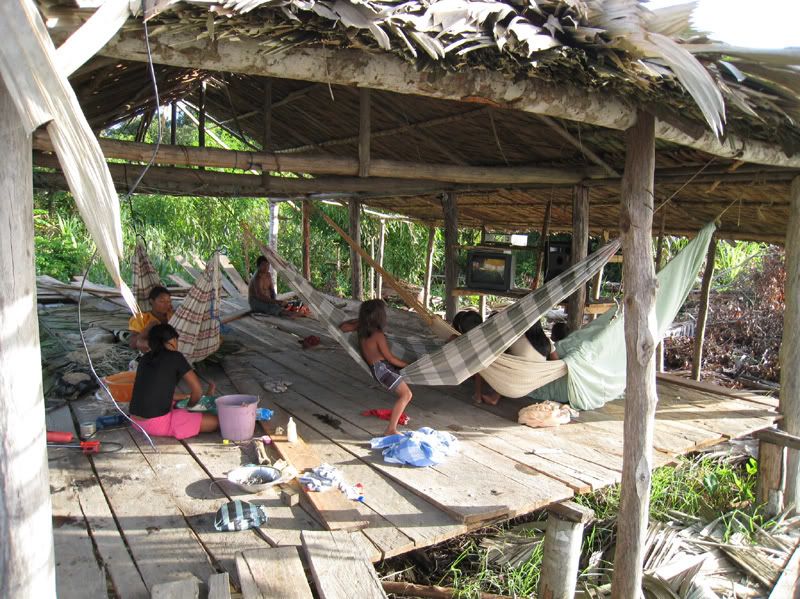
Without words….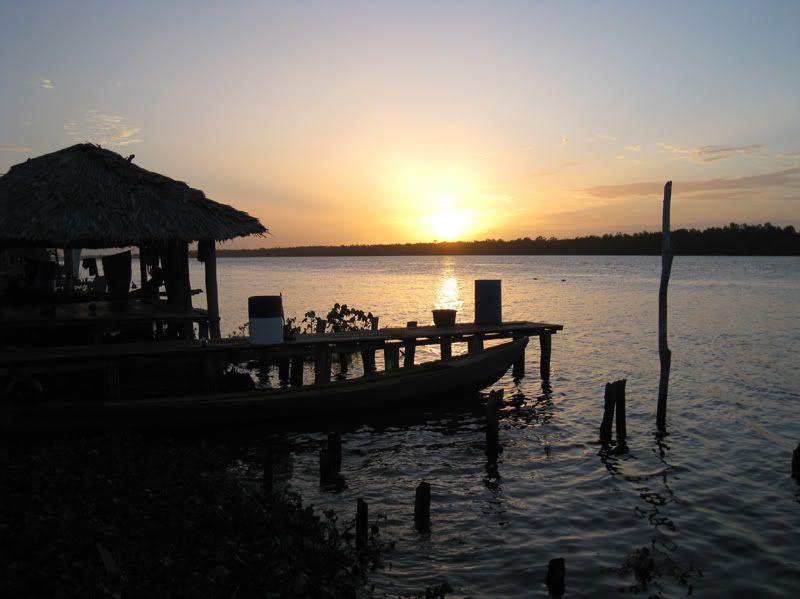
Our dinner from the fish we caught earlier (an indigenous woman cooked it up for us).
We were actually a bit nervous at that point. We cleaned out our dishes nicely with drinking water; however our indigenous guide thought it all needs one more good wash and rinsed it one more time thoroughly in the river in close vicinity to the bathrooms! Ouch….oh well, the dinner tasted very good and luckily we did not get sick.
Our abode for the night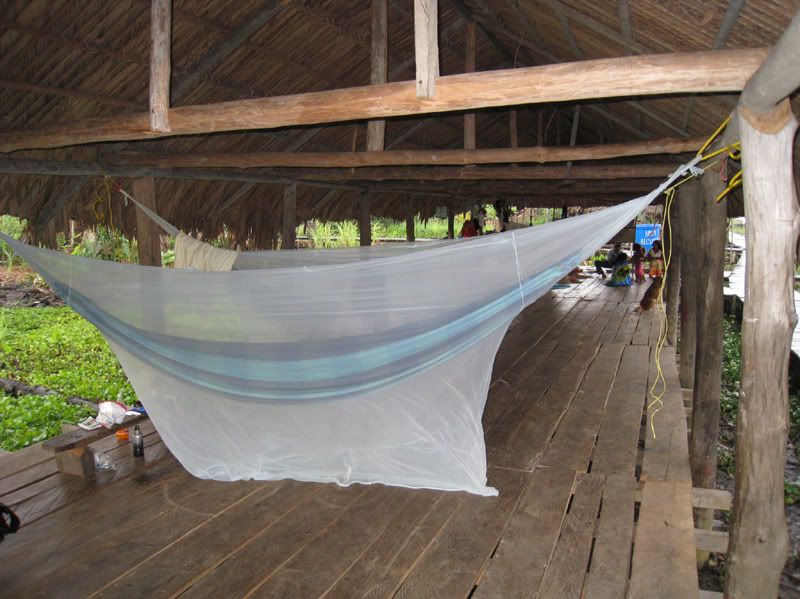
The kids are curious what we are doing
Life starts again early the next morning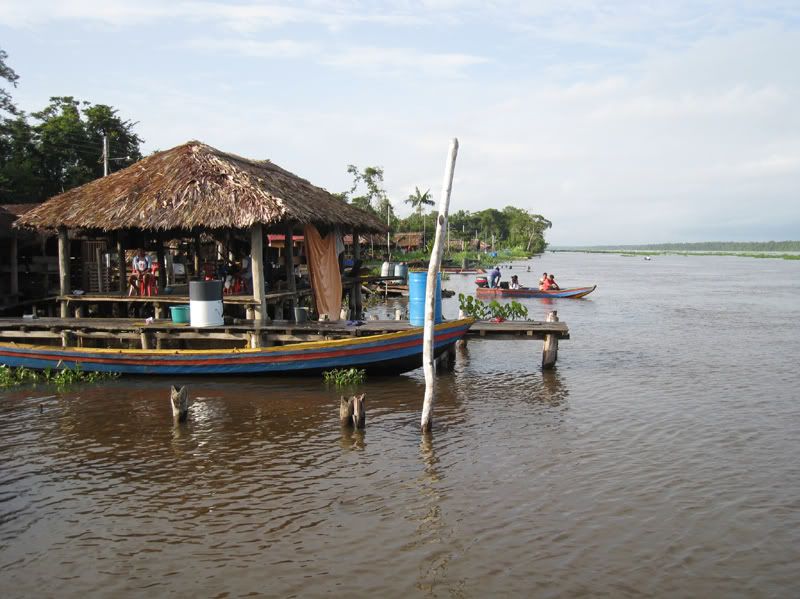
View on the Manomo (side arm of the mighty Orinoco)
Here we are going into a small side arm into the mangrove forests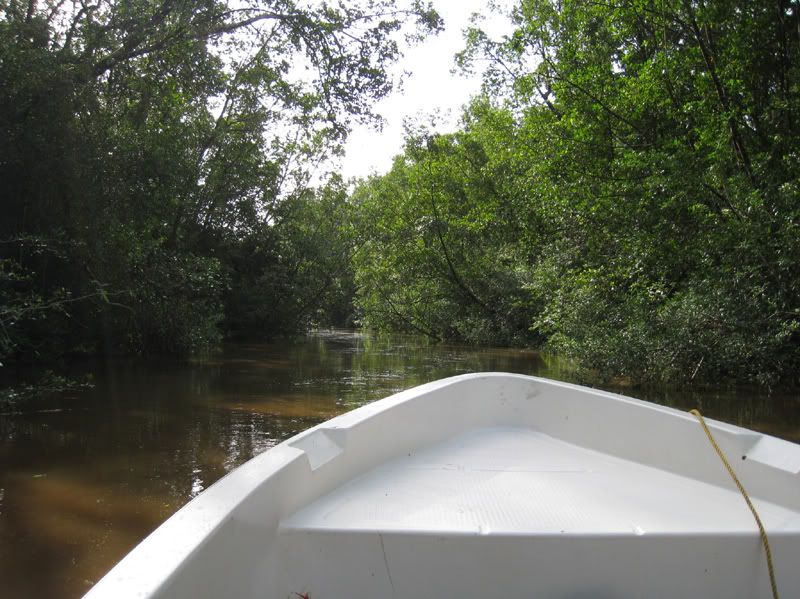
The pelicans taking a rest from all the fishing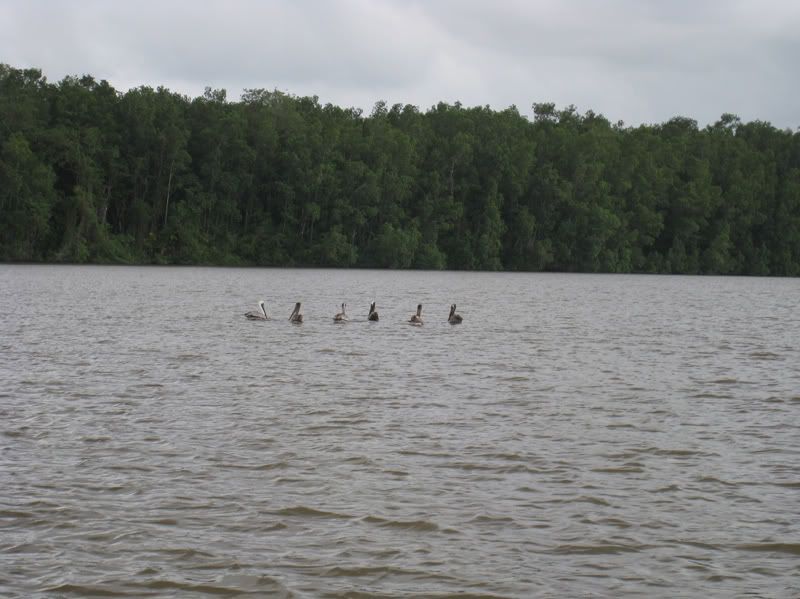
…. And here they are in full action. It was amazing to be in the midst of all those birds and watch them fishing from a very close distance.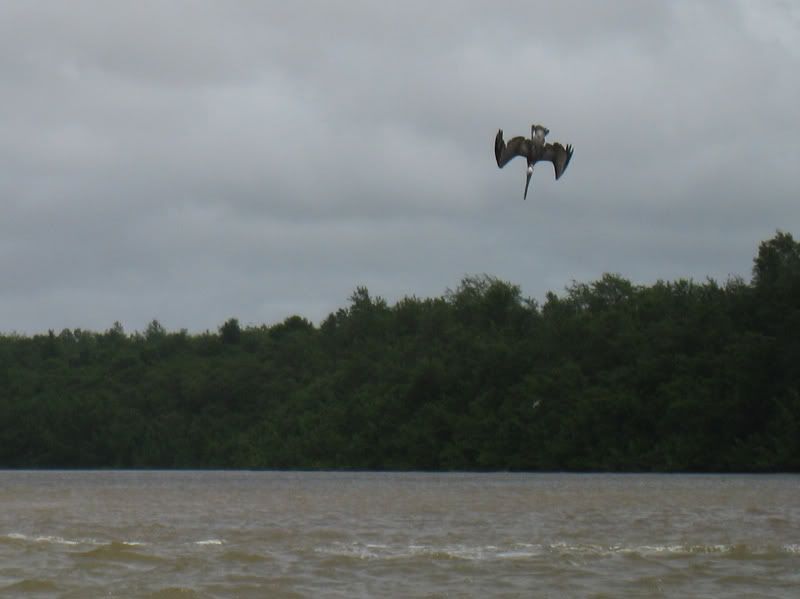
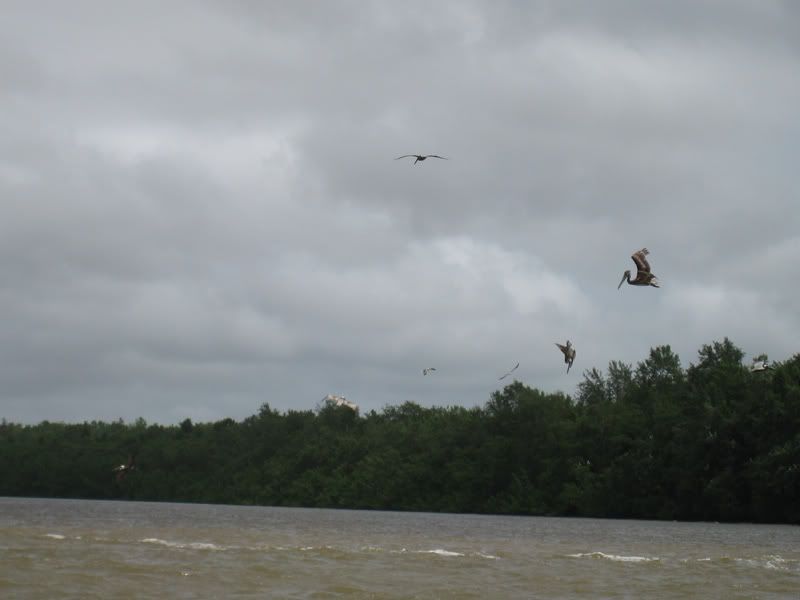
We saw quite some red ibis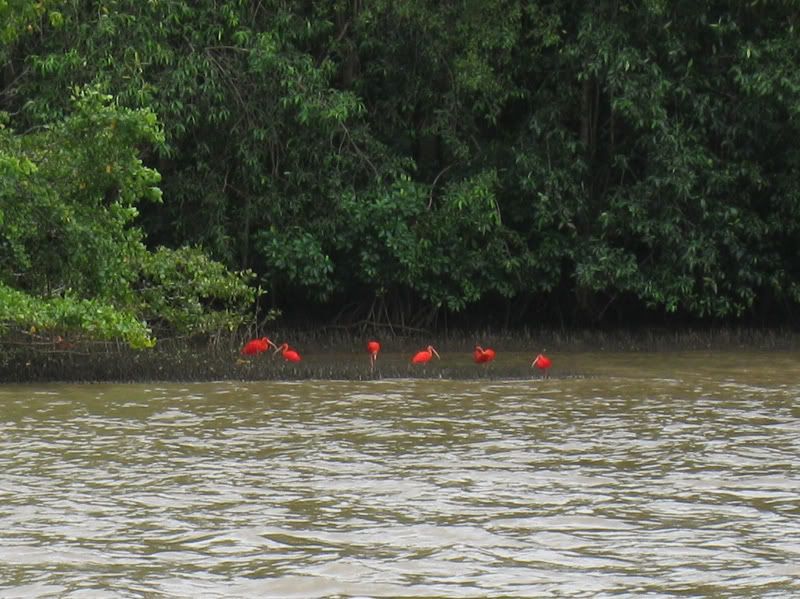
Our second night was spent in a nice camp near Pedernales
We were lucky to spot some river dolphins as well (hard to recognize on the picture though)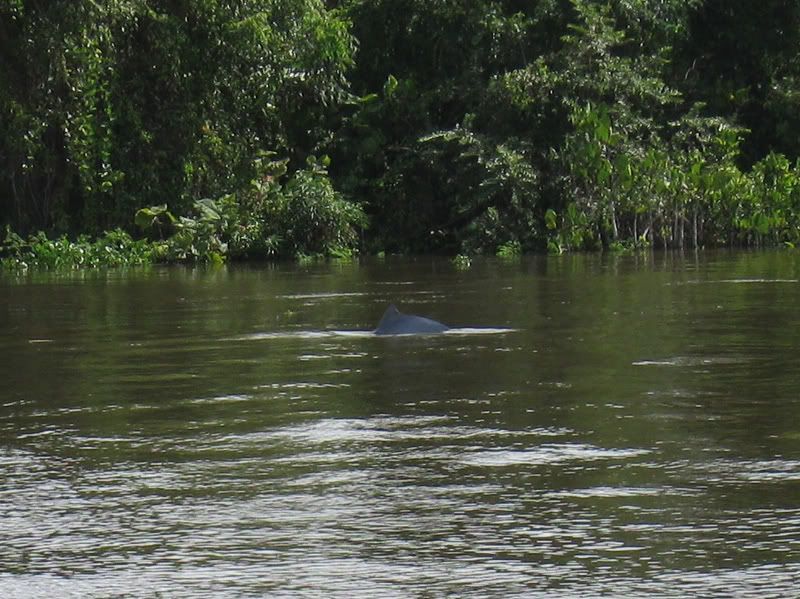
Pineapple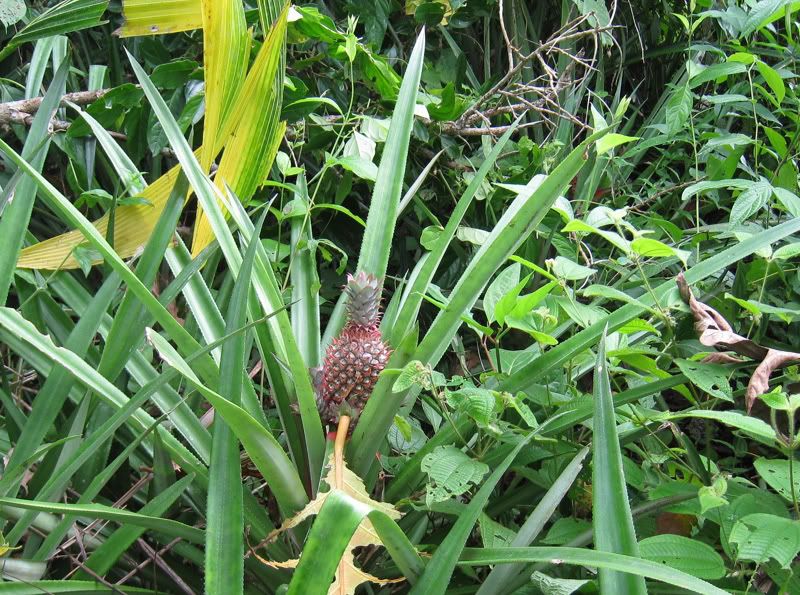
The 2. Orinoco Bridge near Puerto Ordaz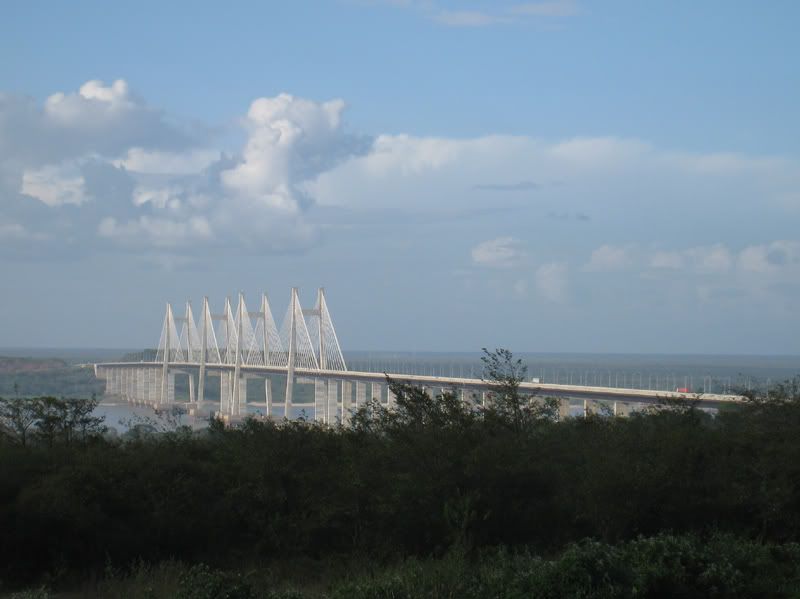
Jaya playing with the monkey from the Posada in Ciudad Bolivar
From Ciudad Bolivar we did a 3-day tour to the Canaima Nationalpark to see the Angel Falls. This waterfall is the world´s highest free-falling waterfall with 979 meters. The falls are located in an isolated jungle region of Venezuela and a flight with a small Cessna is required to reach the base camp in Canaima. From there you take a small boat and reach the base of the waterfall in about 4 hours. We went in the dry season and sometimes the upstream travel can not even be done, but this time around they had plenty of water.
The small Cessna we took from Ciudad Bolivar to Canaima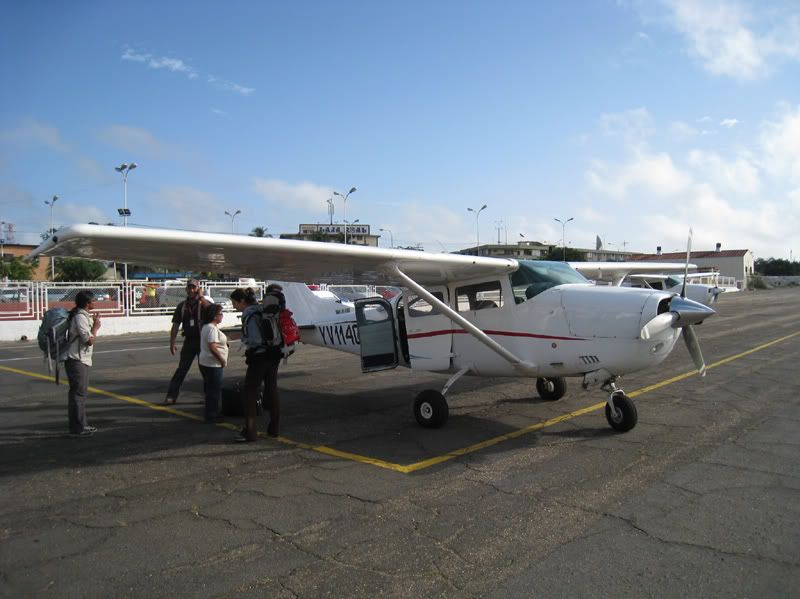
The lagoon of Canaima. There are five waterfalls feeding into the lagoon and that afternoon we did a short excursion to check them out.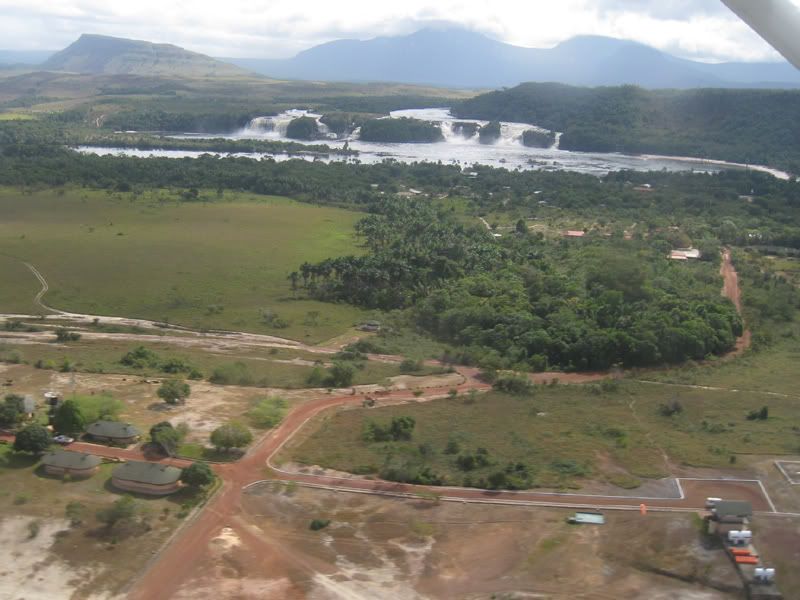
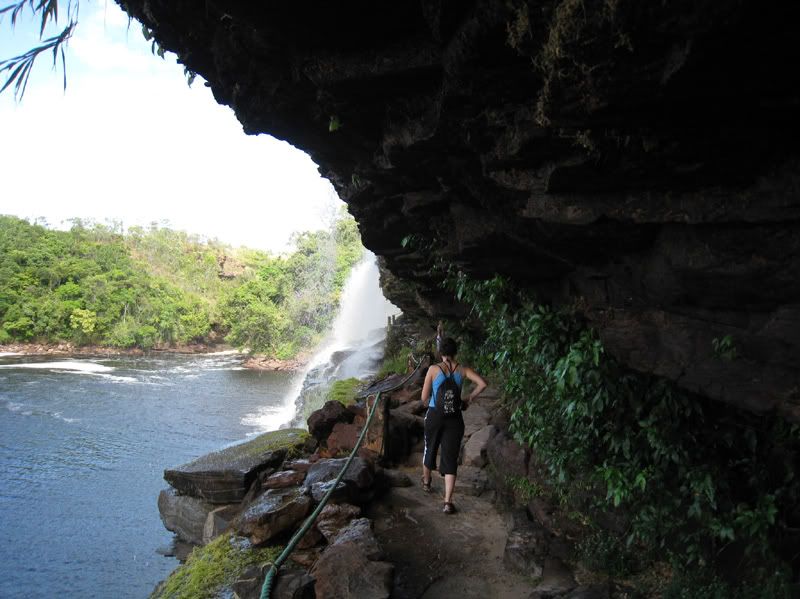
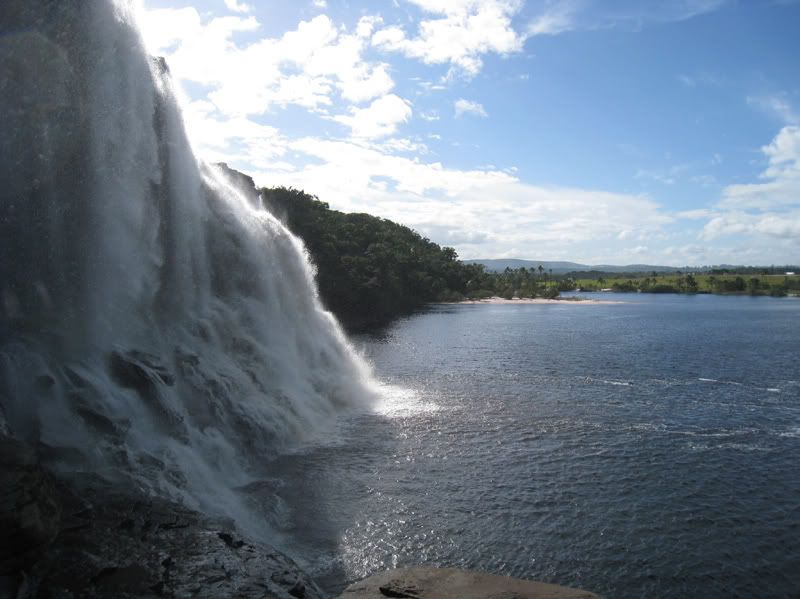
That´s a frog camouflaged as a leaf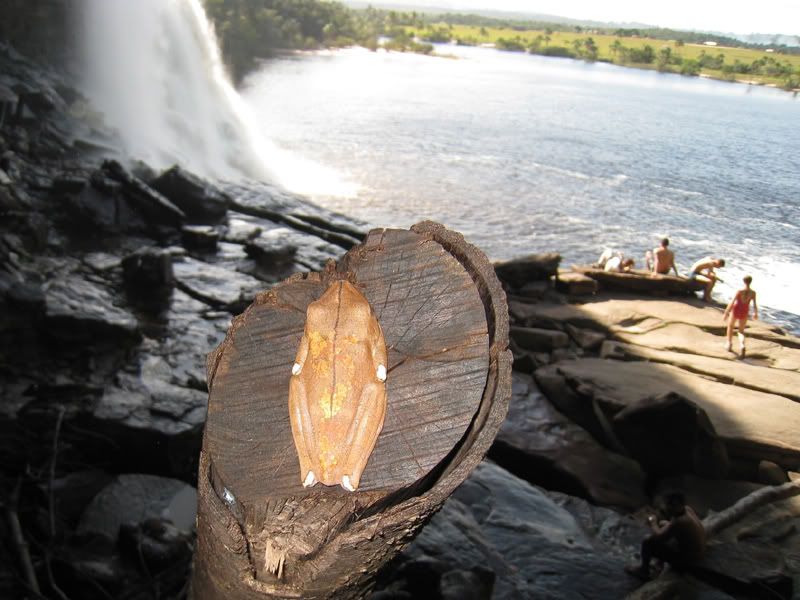
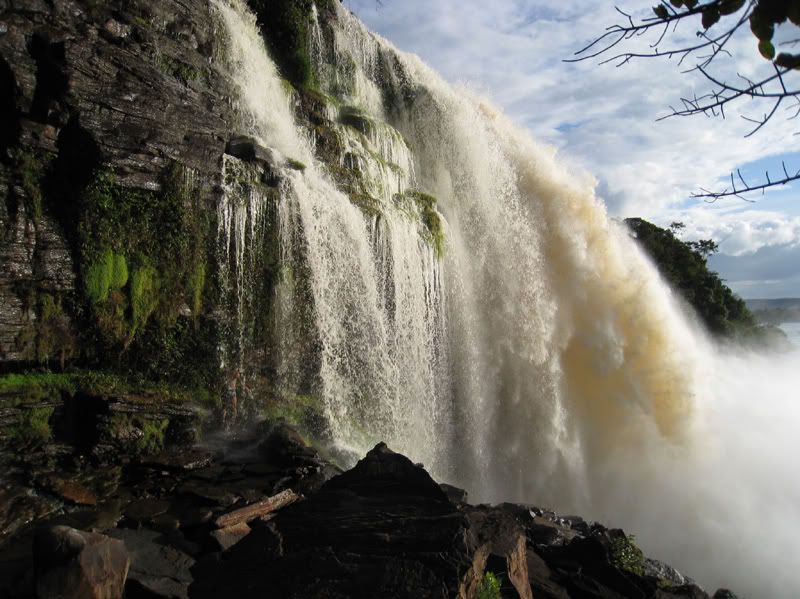
I´ll risk it to check out the backside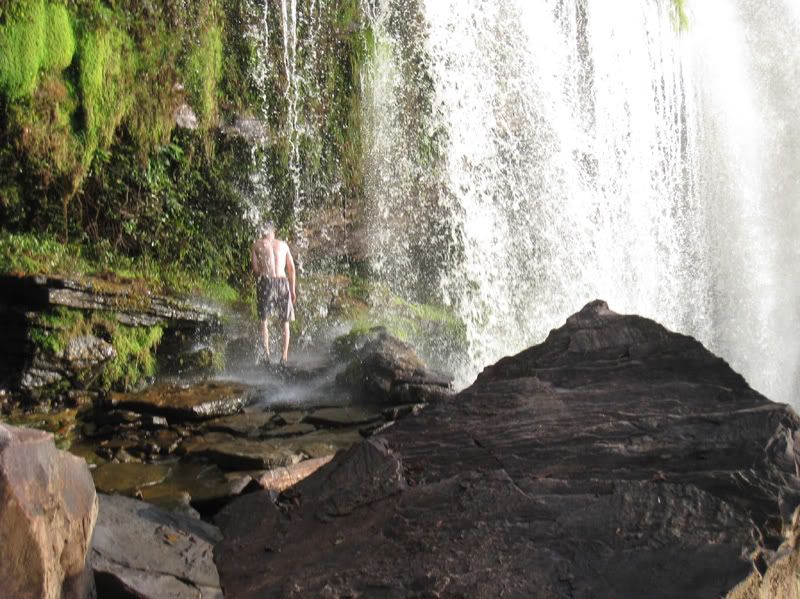
The next day we are off with the boats to go upstream to the Angel Fall
First glance of the Angel Falls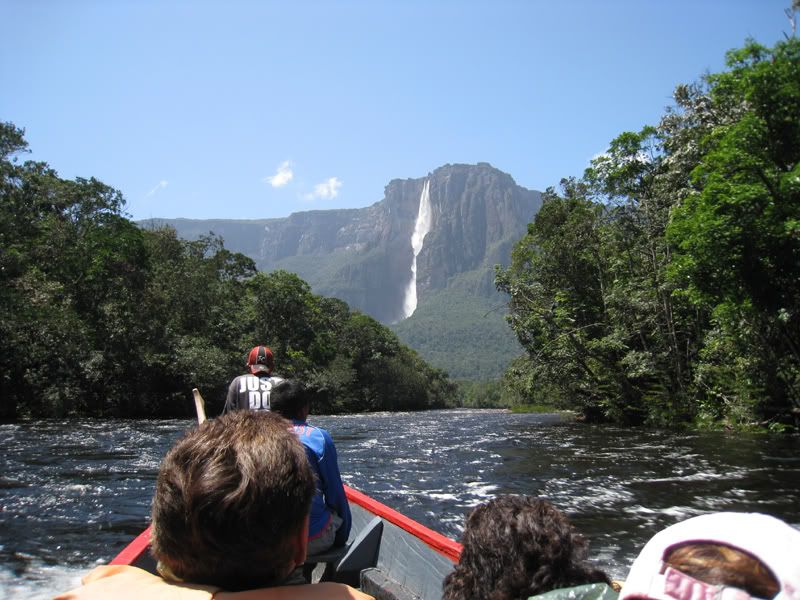
Close up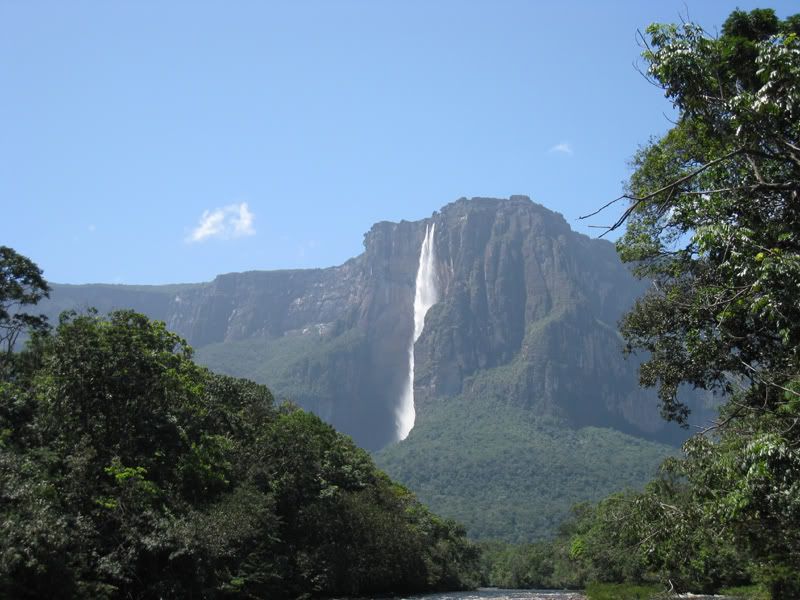
Our camp near the base of the fall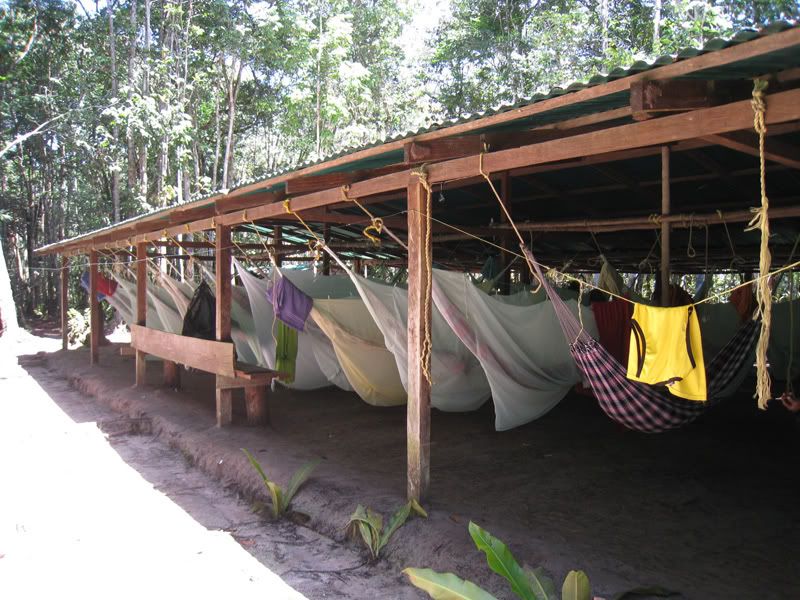
In the afternoon we hiked up closer to the falls. It´s about an one hour hike and quite interesting.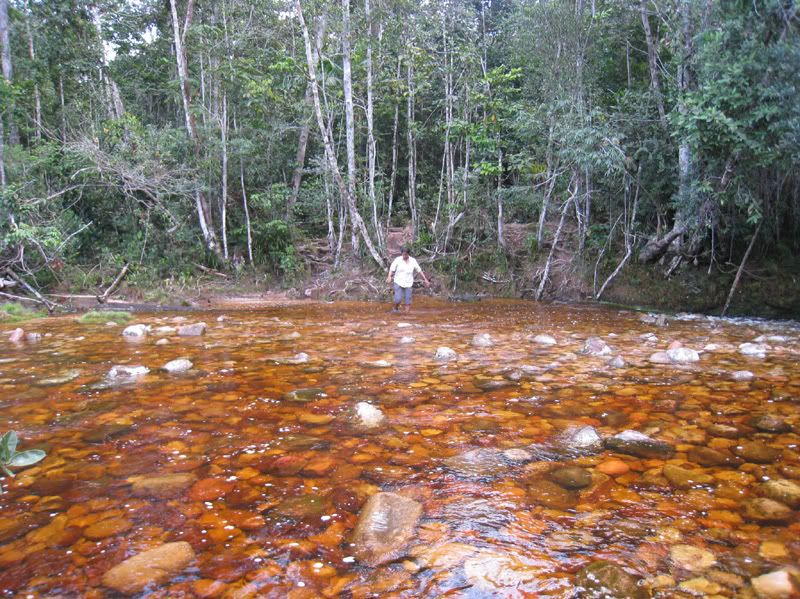
Now we are here.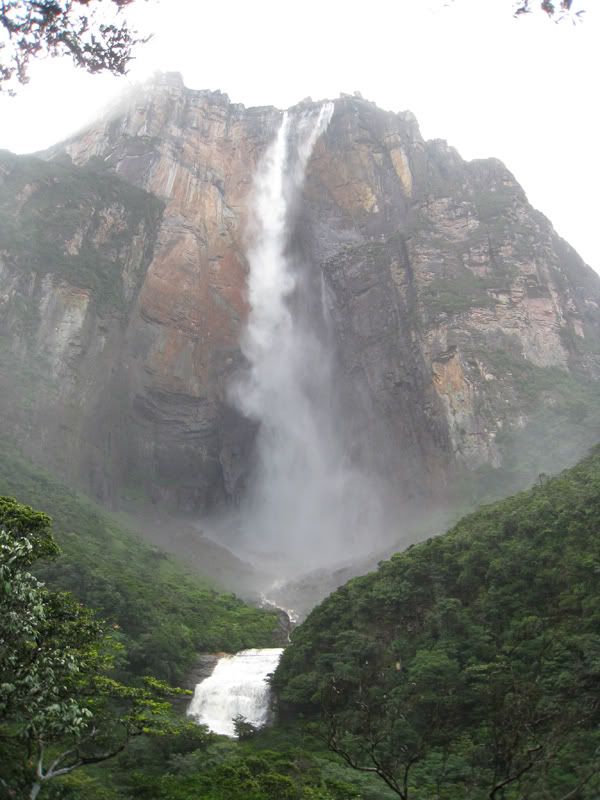
And the cheesy tourist shot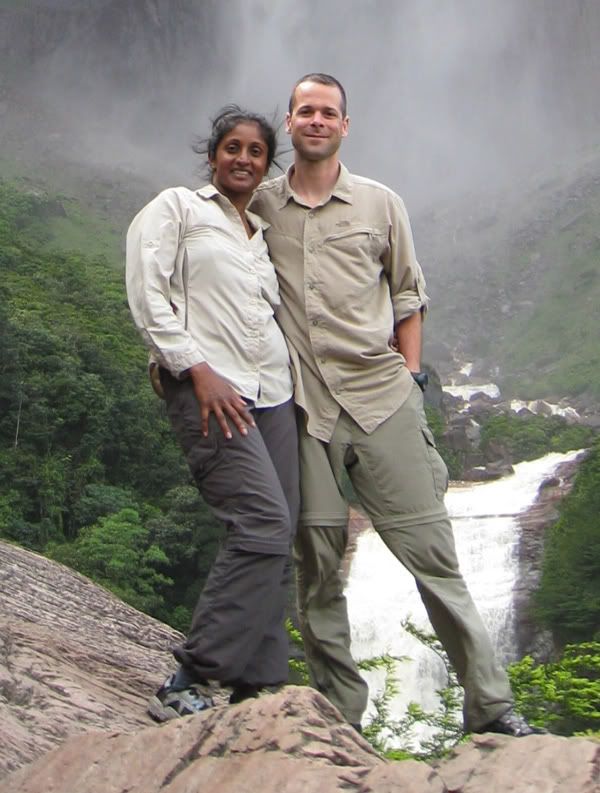
Nice flower Jaya saw on the way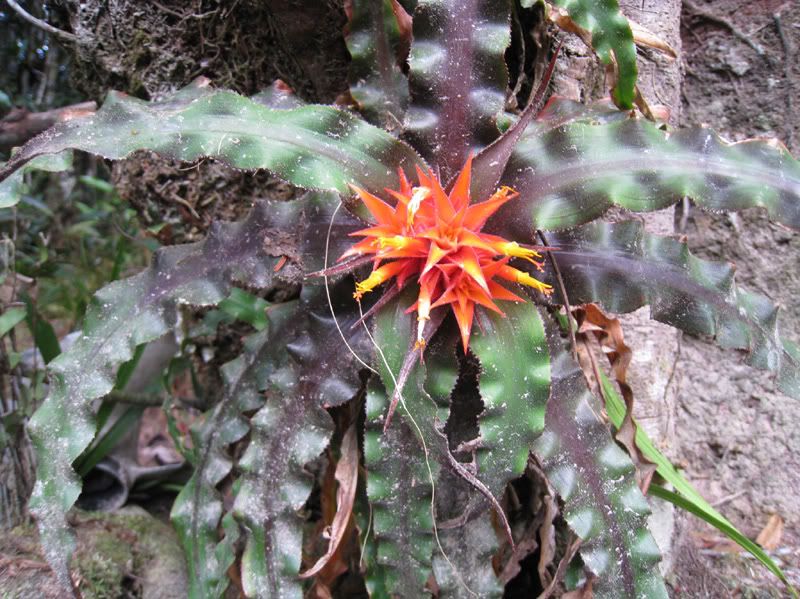
Dinner is being prepared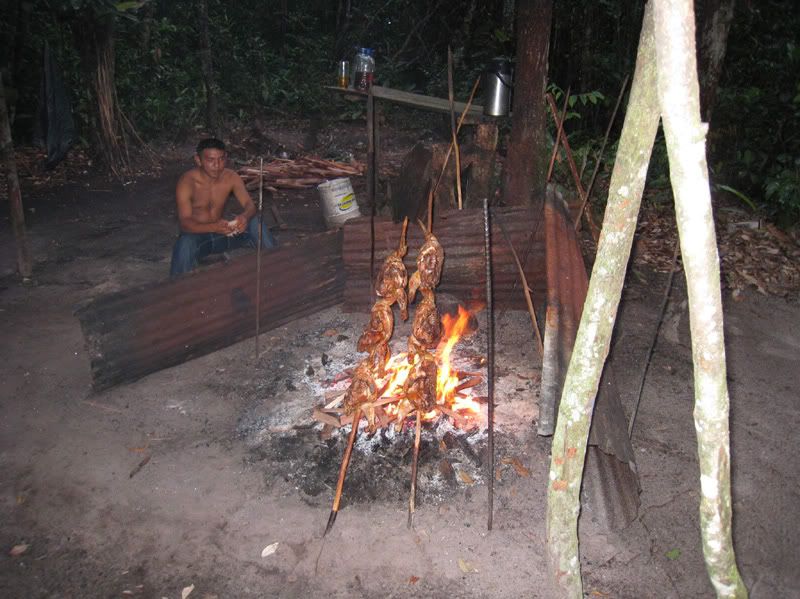
Views on the way back downstream the next day. We are in the middle of the Gran Sabana with the mighty table mountains.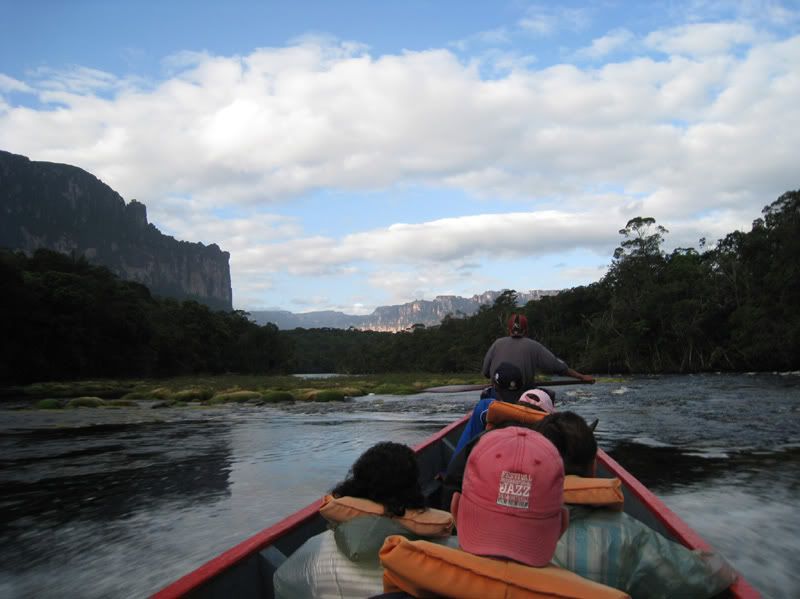
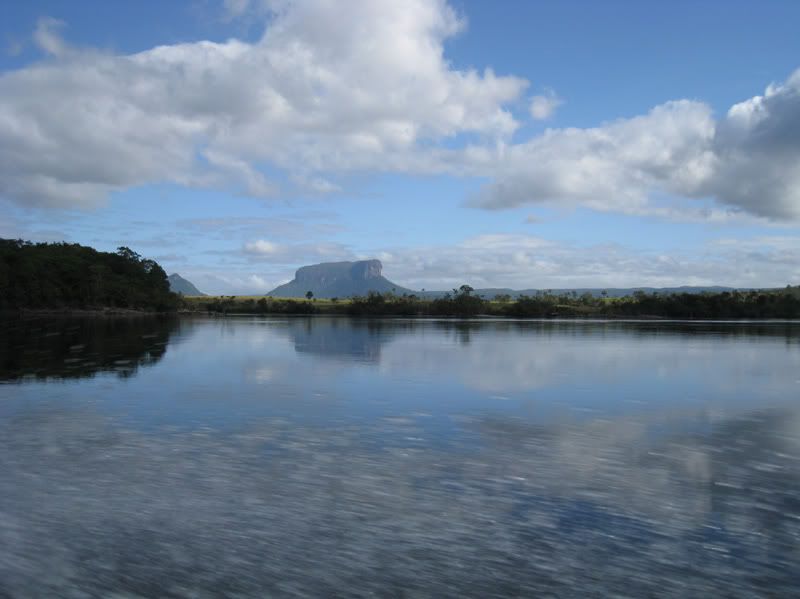
And the flight out again. This time we fly south to Santa Elena close to the border with Brazil.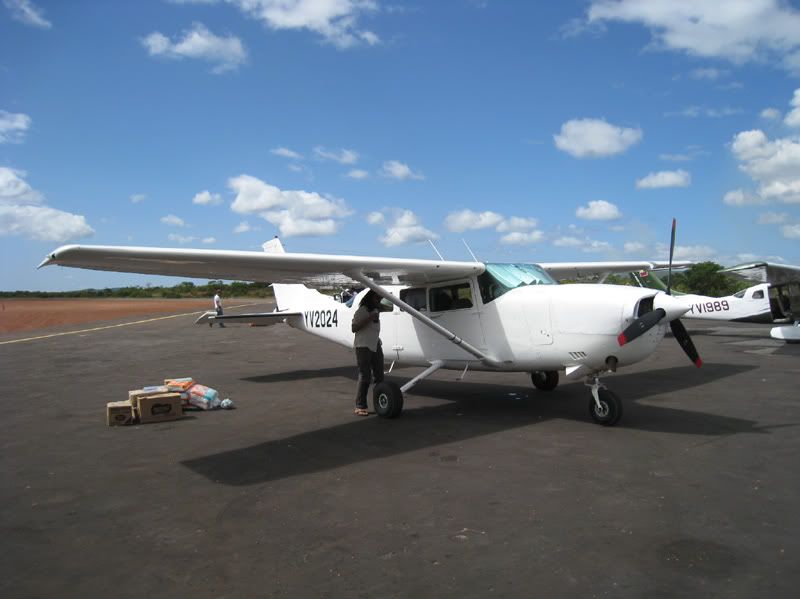
On the flight we get a nice view of the Gran Sabana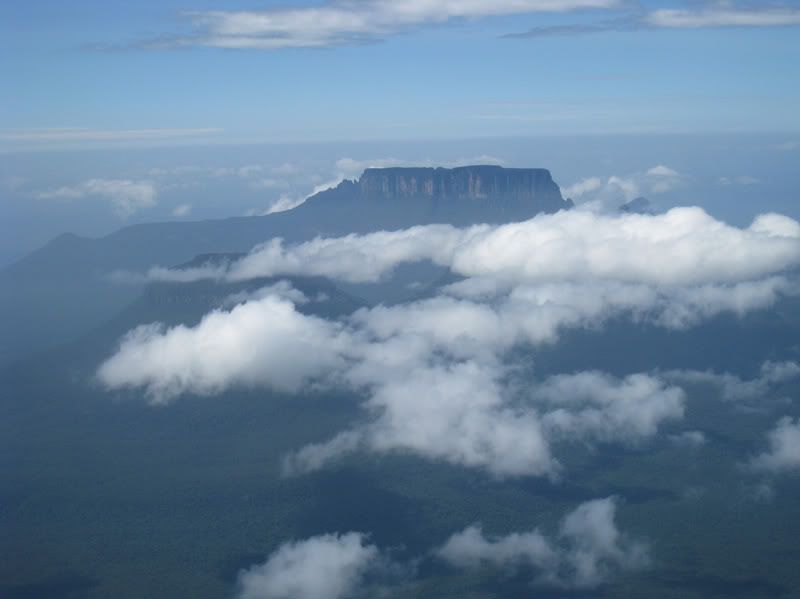
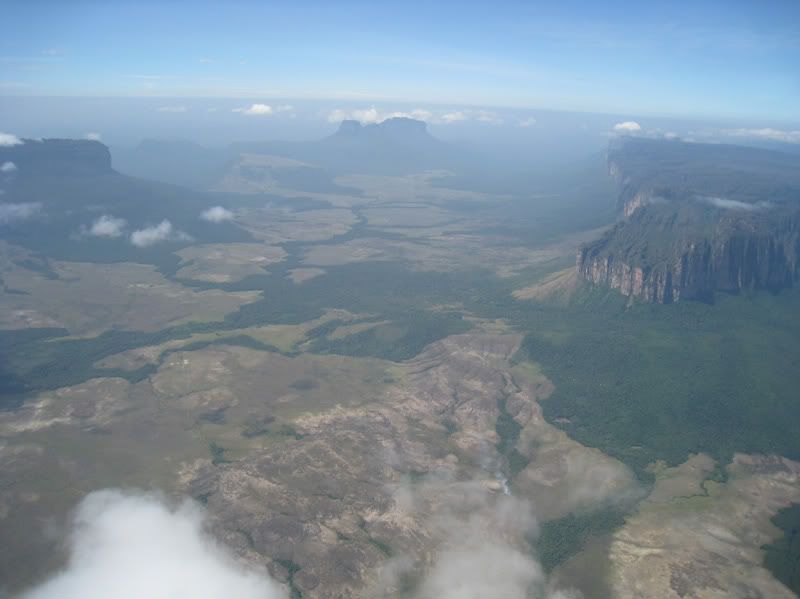
Currently we are in Manaus, Brazil. You can find our route and pretty good maps on http://www.maps.live.com or on the simple Google map below.
1 comment:
Fantastic shots! Looks like you are having a great time. Looking forward to more.
David
Post a Comment